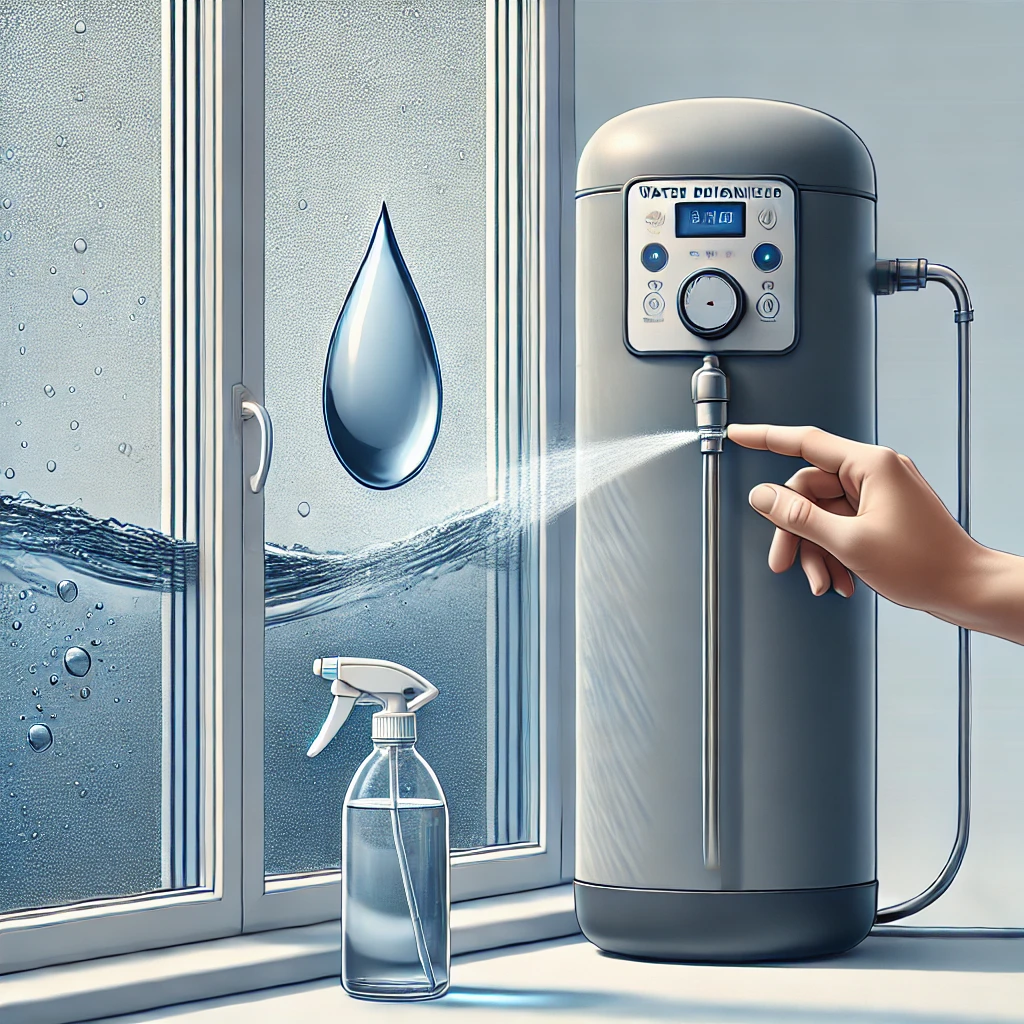When it comes to keeping your windows spotless, traditional cleaning methods often fall short. Streaks, water spots, and residue can leave your windows looking less than perfect. This is where a water deionizer for window cleaning comes in. With its advanced filtration process, a water deionizer can help achieve a streak-free, professional-level clean. In this article, we’ll explore how a water deionizer for window cleaning works, its benefits, and why it should be part of your cleaning toolkit.
What is a Water Deionizer?
A water deionizer (DI) is a filtration system that removes mineral ions, such as calcium, magnesium, and sodium, from water. These minerals are commonly found in tap water and are responsible for leaving behind spots, streaks, and a cloudy finish when cleaning windows. By removing these minerals, a deionizer ensures that the water is pure and free from impurities, making it ideal for window cleaning.
In simple terms, deionization is the process of replacing mineral ions with hydrogen and hydroxide ions. This results in ultra-pure water, perfect for cleaning glass surfaces without leaving any unwanted residue behind.
How Does a Water Deionizer for Window Cleaning Work?
A water deionizer for window cleaning works by passing tap water through a resin bed, which removes the mineral ions. The process typically involves two steps: cation exchange and anion exchange.
- Cation Exchange: The cation resin exchanges positively charged ions like calcium and magnesium with hydrogen ions, which do not leave any mineral traces when the water evaporates.
- Anion Exchange: The anion resin removes negatively charged ions like chloride and sulfate by replacing them with hydroxide ions. This further ensures that the water remains free of impurities.
The result is pure, mineral-free water that’s perfect for cleaning windows. Since there are no minerals to leave behind, the water dries quickly and without any streaks or spots, making it the ideal solution for professional and DIY window cleaning.
Why You Need a Water Deionizer for Window Cleaning
Now that we understand how a water deionizer for window cleaning works, let’s look at why you need one. Here are several key reasons why a water deionizer is essential for achieving spotless, streak-free windows:
1. Streak-Free Finish
The primary reason people use a water deionizer for window cleaning is to avoid streaks and water spots. Ordinary tap water contains minerals that can leave residue on glass surfaces. This residue is particularly noticeable when the water evaporates, leaving behind unsightly streaks. Deionized water, on the other hand, dries without leaving any residue, ensuring a flawless, crystal-clear finish.
2. Saves Time and Effort
Using a water deionizer for window cleaning can actually save you time and effort. Since deionized water dries quickly and streak-free, you won’t need to spend additional time wiping down windows to remove streaks. This makes cleaning windows faster and more efficient, especially for large windows or commercial properties.
3. Safe for Use on All Surfaces
A water deionizer for window cleaning is safe to use on all types of glass surfaces, including windows, mirrors, and skylights. Since deionized water is free of minerals, it won’t leave behind any harmful residue that could damage or discolor sensitive surfaces. This makes it an excellent choice for delicate glass, tinted windows, and even solar panels.
4. Eco-Friendly Solution
By using a water deionizer for window cleaning, you can reduce the need for harsh chemical cleaning agents. Traditional cleaning methods often require the use of chemicals that can be harmful to both the environment and your health. Deionized water provides a natural and effective alternative, making it an eco-friendly solution for cleaning windows.
5. Cost-Effective in the Long Run
While a water deionizer for window cleaning might require an initial investment, it can save you money in the long term. Since you won’t need to purchase chemical cleaners or deal with the costs of professional window cleaning services, a deionizer quickly pays for itself. Plus, it helps extend the life of your windows by preventing mineral buildup and damage caused by harsh chemicals.
How to Use a Water Deionizer for Window Cleaning
Using a water deionizer for window cleaning is simple and straightforward. Here’s how to get started:
- Set Up the Deionizer: Connect the deionizer system to your water source, ensuring the resin beds are properly installed and ready to filter the water.
- Fill Your Cleaning Equipment: Use a hose or bucket to collect the deionized water, depending on your cleaning setup. For larger windows, a professional water-fed pole system is recommended for reaching high or hard-to-access areas.
- Start Cleaning: Use the deionized water to wash the windows, ensuring you cover all surfaces. There’s no need for squeegees or towels to wipe down streaks—just let the water evaporate naturally for a spotless finish.
- Maintain the System: Regularly check the deionizer’s resin beds and replace them as needed to ensure optimal performance.
Conclusion: The Smart Choice for Spotless Windows
If you’re tired of dealing with streaky windows and time-consuming cleaning methods, a water deionizer for window cleaning is the solution you’ve been looking for. It’s an effective, eco-friendly, and cost-efficient way to achieve spotless, streak-free windows without the use of harsh chemicals. Whether you’re a homeowner or a professional cleaner, investing in a deionizer will help you save time, money, and effort while achieving the best possible results.

